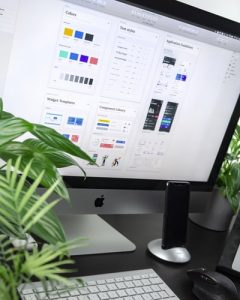 It’s a fact that marketing efforts have a higher impact when they’re made visually appealing. It’s simply in our nature to be drawn to imagery, color, and design.
It’s a fact that marketing efforts have a higher impact when they’re made visually appealing. It’s simply in our nature to be drawn to imagery, color, and design.
From a marketing standpoint, design elements help to catch and maintain the viewer’s attention. This way there’s a better chance of getting the message across.
Marketing is especially potent when there’s a combination of several design elements used. It’s important for every marketer to know the different elements and how to apply them for desired impact.
Not every person has an eye for creativity, but successful design can still be achieved with help of the right tools. Let’s take a look at the 5 design elements and how they can support your marketing strategy.
1. Images
They say a picture is worth a thousand words, which is exactly why they’re such powerful attention grabbers. They stir up a feeling in the viewer, giving them an overall impression of the content in a split second’s time.
Photos can and should be used in several facets of a marketing strategy. They effectively draw attention to social media posts and encourage further engagement.
Photos also give visitors a reason to keep scanning through your website. Blogs are more interesting with photos that break up the text. Additionally, all printed materials such as brochures and catalogues have a higher impact with the use of photos.
It’s great to use your own photos if you have them available. Although, sometimes you may not have the right photo for the project. In this case, you can always get a free, professional-grade image from Unsplash. No sign-in or licensing required.
2. Icons
Symbols like clip-art or vector art are also useful imagery. They’re mostly used to portray action, without the use of words. Icons can be used as the symbol in your logo, or for action buttons on your website. It’s essential that the icon clearly represent what it stands for, to avoid confusion.
It’s easy to get access to icons for free online. The largest free icon database can be found at Flaticon. Just type in what type of icon you’re looking for – as an example “tree” – and you’ll quickly be presented with a huge selection to choose from.
3. Illustrations
Illustrations can be highly effective visuals when used appropriately. But using illustrations in the wrong place, such as your branding campaign, can cheapen the appearance.
On the other hand, these can be quite effective for projects such as presentations or educational materials. In this case, they portray a sense of playfulness and friendliness from your business.
Another appropriate place to use illustrations is in animated videos or presentations. These videos can be used to educate, persuade, or explain certain topics in a digestible manner. Animated videos are commonly used for social media posts or on websites. Try creating your own animated video for free at Vimeo.
4. Fonts
Fonts can be used to give marketing materials a branded look. These should also be used strategically. Using too many different fonts, or bold and obnoxious fonts in the wrong places, can turn a viewer off. This makes it harder to digest the content, which usually results in losing the viewer’s attention.
Choose a fitting font or two for your website or marketing materials with FontSpace. It’s free!
5. Colors
Emotions and feelings are associated with specific colors. If you think of the words happy or energetic, you might picture the color yellow. Or the word calm might bring the color blue to mind. Whatever feeling or image you’re trying to convey in your marketing materials should be considered when branding your business.
Additionally, your marketing materials should be unified with your brand identity. Whichever colors you’ve chosen for your brand should echo throughout your website, printed promotional materials, and social content. For your business card, brand your card with your color(s), font, and your logo.
You can customize your own business card with your brand’s unique colors at Business Cards for free.
The resources listed above won’t magically turn you into a professional designer. However, too many marketers settle for poorly designed materials when they are restricted by budget. If you are going to take the do-it-yourself route, make sure you revisit this article and listed resources. Incorporating images, icons, illustrations, the right fonts, and colors will elevate the quality of your design and marketing materials.

